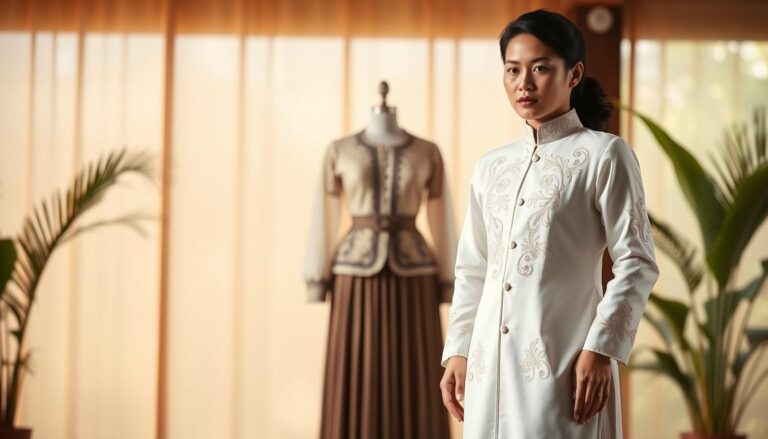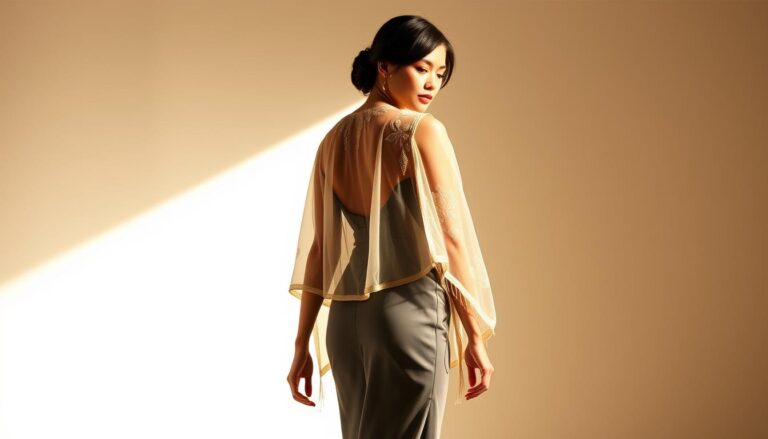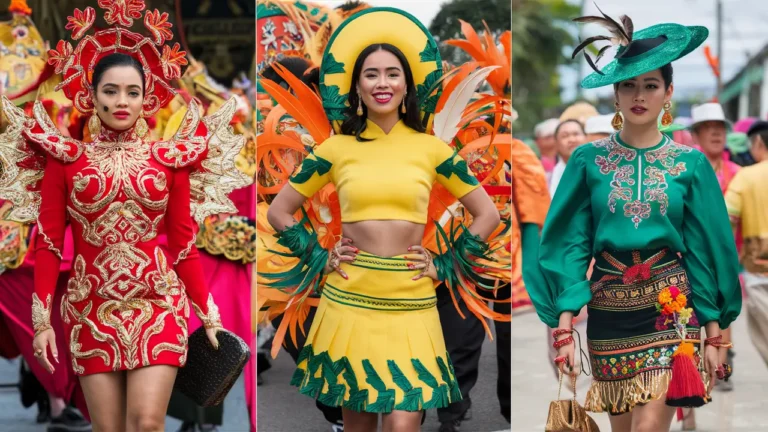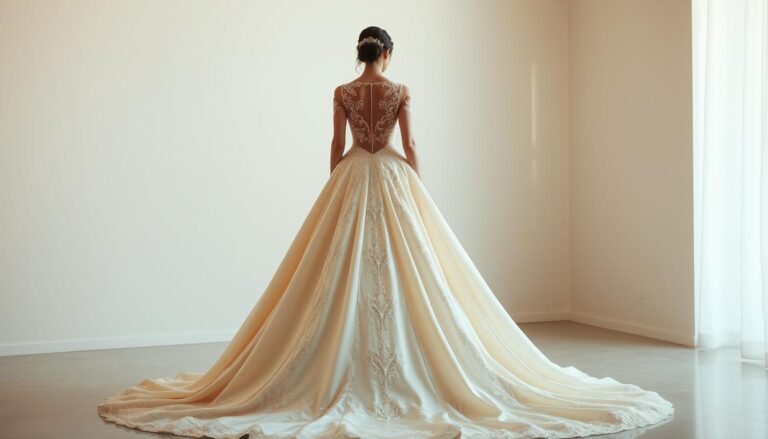What Makes Barong Tagalog Special: History & Appeal
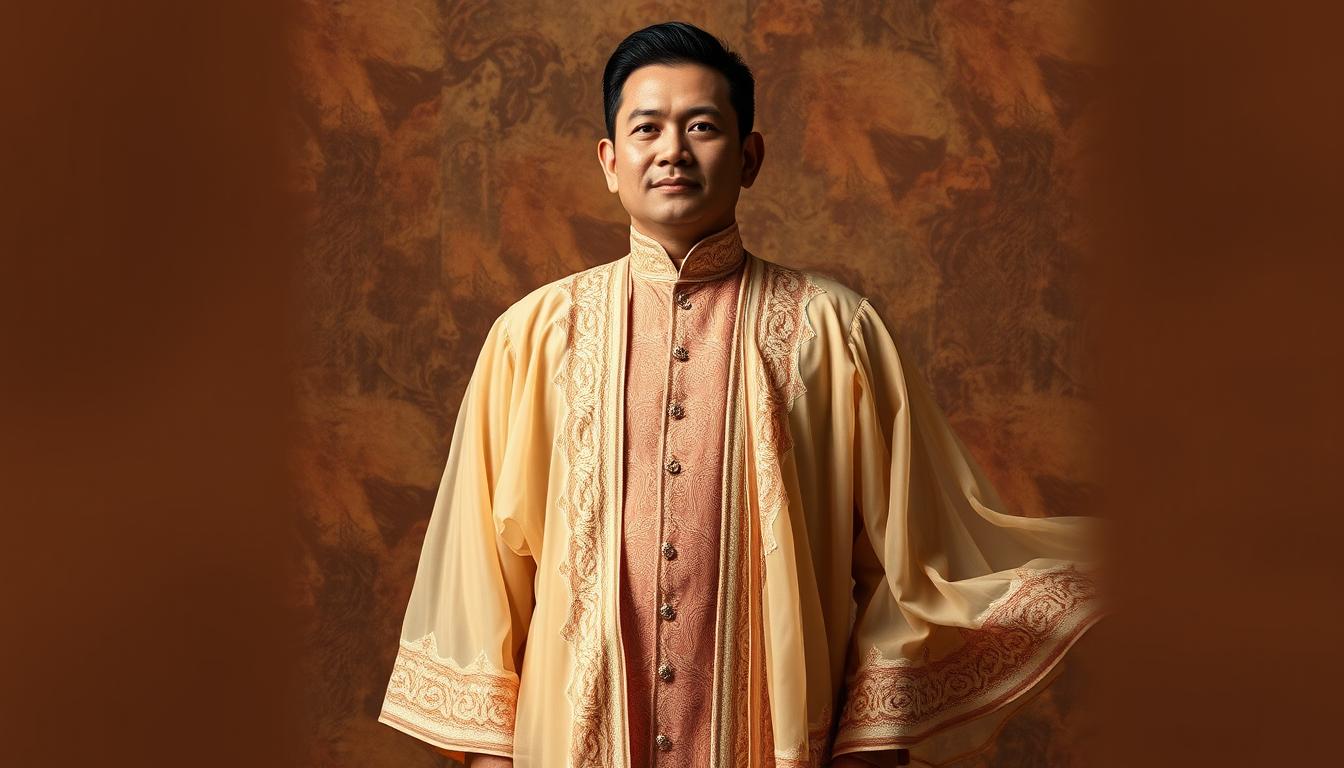
The Barong Tagalog stands as a vibrant symbol of Filipino pride, blending centuries of craftsmanship with cultural storytelling. This lightweight garment, traditionally worn untucked over trousers, carries a legacy shaped by trade, colonization, and artistic innovation. Its delicate sheer fabrics and intricate embroidery reflect a unique fusion of practicality and elegance.
Originating from pre-colonial baro (shirt) designs, the attire evolved through Spanish colonial influences into its modern form. Natural fibers like piña (pineapple leaf fiber) and jusi (silk blends) define its airy texture, perfect for tropical climates. Artisans hand-stitch patterns inspired by nature and geometry, creating pieces that feel both timeless and contemporary.
Today’s designs showcase bold colors and synthetic blends while honoring traditional techniques. From formal weddings to cultural celebrations, the Barong Tagalog remains a versatile choice for those valuing heritage-forward fashion. Its ability to adapt—embracing shorter cuts or vibrant hues—proves its enduring relevance in global style conversations.
Key Takeaways
- Represents over 400 years of Philippine history and identity
- Features breathable natural fibers like pineapple-based piña cloth
- Combines Chinese, Malay, and European design influences
- Modern versions use colorful fabrics while preserving artisanal techniques
- Symbolizes cultural pride beyond its role as formal clothing
Heritage and Historical Roots
Long before globalization shaped fashion, Filipino artisans crafted garments that mirrored their environment. The Barong Tagalog emerged from this tradition, evolving through eras of trade and cultural exchange.

Pre-colonial Origins and Early Designs
Early versions, called baro ng tagalog, used rough cotton and fibers from pineapple leaves (piña) or banana plants (abaca). These collarless shirts ended just below the waist, designed for mobility in humid climates. Chiefs wore deep red versions, while everyday wear came in muted whites or blacks.
Simple geometric patterns adorned sleeves and hems. Unlike today’s ornate styles, these garments prioritized function. Their loose cuts allowed airflow—a necessity in tropical heat.
Colonial Influences and Cultural Fusion
Spanish rule transformed the garment dramatically. European fabric like jusi (silk blends) replaced some indigenous materials. Artisans incorporated lace-like embroidery techniques from Spanish settlers.
The 18th century introduced the collar, blending Chinese aesthetics with local design. Delicate threadwork began depicting floral motifs instead of basic shapes. This fusion created garments that quietly resisted colonial norms through cultural pride stitched into every fold.
What Makes Barong Tagalog Special: Key Elements
Three defining characteristics elevate this Filipino garment beyond ordinary attire. Its silhouette whispers comfort, while meticulous stitching and fabric innovations shout cultural ingenuity.
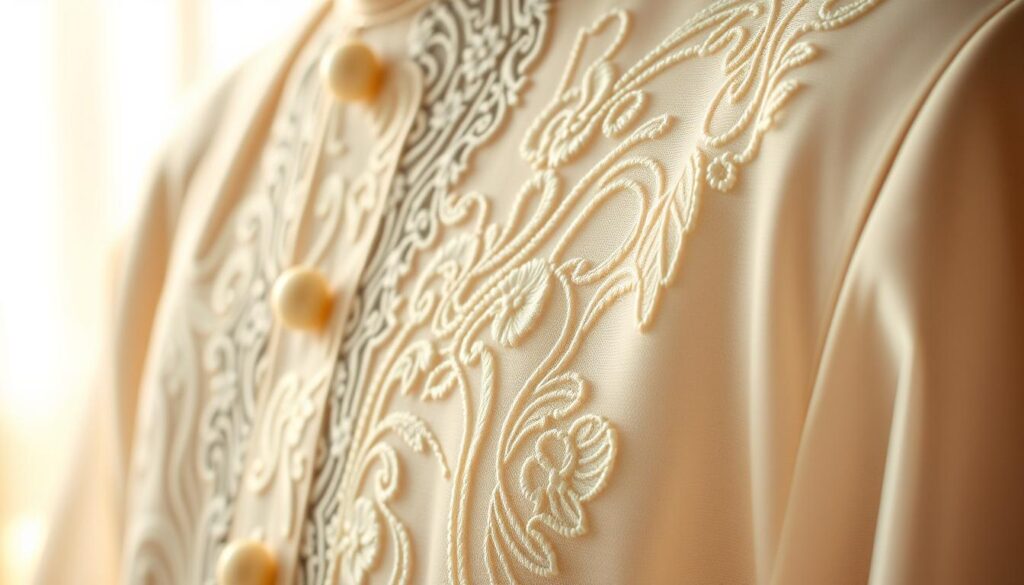
Silhouette That Breathes Tradition
The Barong Tagalog’s loose cut defies rigid tailoring norms. Flowing sleeves and an untucked hem create airy movement perfect for tropical climates. This elegant drape flatters all body types while honoring centuries-old practicality.
Threads of Artistry
Hand-stitched embroidery transforms simple shirts into canvases. Artisans spend weeks crafting floral patterns or geometric designs using techniques passed through generations. One master weaver notes: “Each stitch carries our ancestors’ patience.”
Early versions used pineapple-leaf fibers (piña) and banana-silk blends. Today’s materials mix traditional jusi with modern silk hybrids for richer textures. These innovations maintain breathability while enhancing the garment’s luxurious look.
From collarless peasant shirts to embroidered formalwear, the Barong Tagalog adapts without losing its soul. It remains wearable art—a testament to Filipino resilience threaded into every fold.
Exquisite Fabrics and Craftsmanship
At the heart of Filipino sartorial excellence lies meticulous fabric selection. The Barong Tagalog’s enduring charm stems from artisanal mastery of rare textiles and evolving weaving methods. Every thread choice tells a story of cultural preservation meeting modern ingenuity.
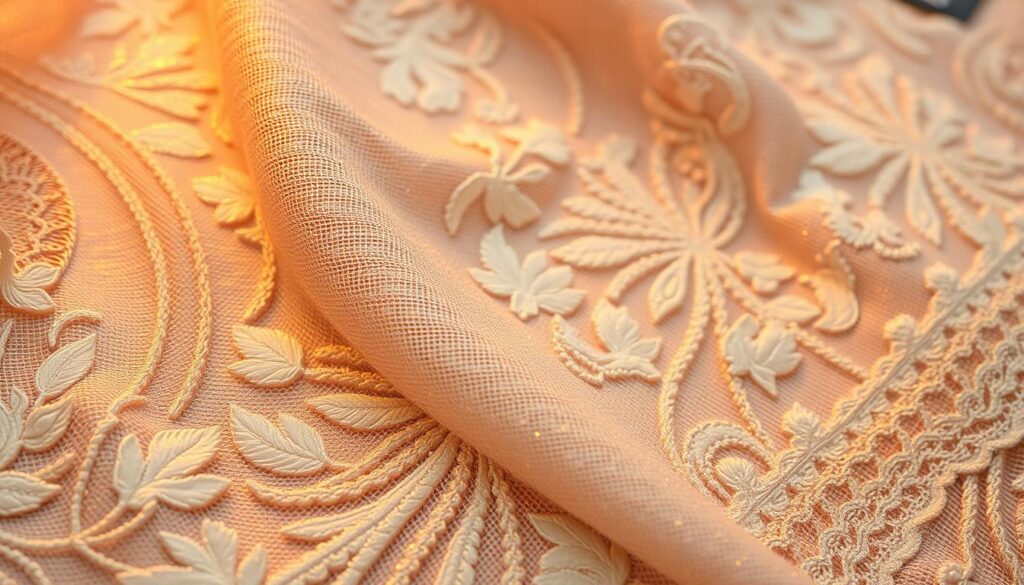
Piña and Jusi: The Signature Materials
Piña, crafted from pineapple leaf fibers, remains the gold standard for luxury. Workers extract strands through labor-intensive scraping and knotting processes. “Weaving piña is like writing poetry with threads,” notes a Batangas-based master weaver.
Traditional jusi blends silk with abaca for lightweight durability. The made jusi technique preserves historical patterns while allowing subtle sheen. These materials create garments that float effortlessly while showcasing intricate designs.
Innovative Blends and Detailing in Modern Barongs
Contemporary artisans mix piña with silk hybrids for richer textures. Abaca-cotton blends offer casual elegance, while cocoon fibers add unexpected depth. These innovations maintain breathability but introduce new colors and geometric patterns.
Strategic fabric choices dictate drape and formality. Delicate piña-seda shimmers at weddings, while structured jusi commands attention in boardrooms. Through thoughtful material combinations, modern barongs honor tradition while embracing global fashion trends.
Modern Adaptations and Contemporary Trends
Filipino fashion embraces innovation while honoring tradition, and the Barong Tagalog leads this evolution. Designers now reimagine this cultural icon with bold strokes, balancing heritage cues with fresh aesthetics for global appeal.
Colored Barong Tagalog: A Contemporary Twist
Gone are days when ivory dominated formal attire. Vibrant blues, deep burgundies, and emerald greens now grace runways and weddings. These hues retain the garment’s elegance while reflecting personal flair. “Today’s wearers want pieces that feel both rooted and revolutionary,” notes a Manila-based designer.
Modern materials like silk-polyester blends enhance color saturation. Made jusi techniques create textured fabrics that shimmer under lights. Contrasting collars in darker tones add depth, proving tradition thrives through thoughtful updates.
Fusion Styles and Custom Design Options
Boundaries blur as tailors merge cultural motifs with Western cuts. Slim-fit silhouettes pair with traditional embroidery, while asymmetrical hems meet classic necklines. Customization reigns—think monogrammed cuffs or geometric patterns replacing floral designs.
Lightweight cotton versions now appear at casual events, paired with jeans for weekend gatherings. Women’s styles feature delicate lace overlays, expanding the attire’s reach. Whether through metallic threads or minimalist collars, each innovation whispers respect for ancestral craft while shouting modern confidence.
Cultural Significance in Formal Occasions
In Philippine celebrations, clothing becomes a language of legacy. The Barong Tagalog transforms ordinary moments into cultural statements at weddings, graduations, and state functions. Presidents like Ramon Magsaysay cemented its role in the 1950s by wearing it during pivotal national addresses.
Symbol of Heritage, Elegance, and Identity
Choosing this attire for formal events signals respect for tradition. Delicate pechera embroidery on the chest mirrors ancestral artistry, while the crisp collar frames dignity. A Manila designer observes: “When families commission bespoke barongs, they’re stitching their stories into the fabric.”
Modern versions retain historical touches like sheer jusi fabric but embrace bold colors for personal flair. The garment’s evolution—from Spanish-era restrictions to presidential podiums—parallels Filipino resilience. Its lightweight drape feels timeless yet adaptable, much like the culture it represents.
Beyond aesthetics, wearing barong unites generations. Grandfathers pass down heirloom pieces, while grooms pair contemporary cuts with traditional baro tagalog collars. Each thread whispers pride, making every formal event a runway for heritage.
Conclusion
More than clothing, the Barong Tagalog embodies a living chronicle of Filipino culture. Over centuries, its journey from earthy baro tagalog tunics to embroidered masterpieces mirrors the nation’s resilience. Natural fibers like piña and silk blends remain central to its airy elegance, while modern colors and slim cuts prove its adaptability.
Distinctive design elements—from intricate patterns to structured collars—bridge ancestral craftsmanship with global style. This attire thrives at formal events, where every stitch whispers pride in heritage. Yet it also shines in casual occasions, reimagined through innovative fabrics and minimalist details.
To wear a barong is to carry forward stories woven through generations. Its enduring appeal lies in balancing tradition with reinvention—a testament to Filipino creativity. Explore this iconic clothing, and discover how threads of history continue shaping contemporary culture.


